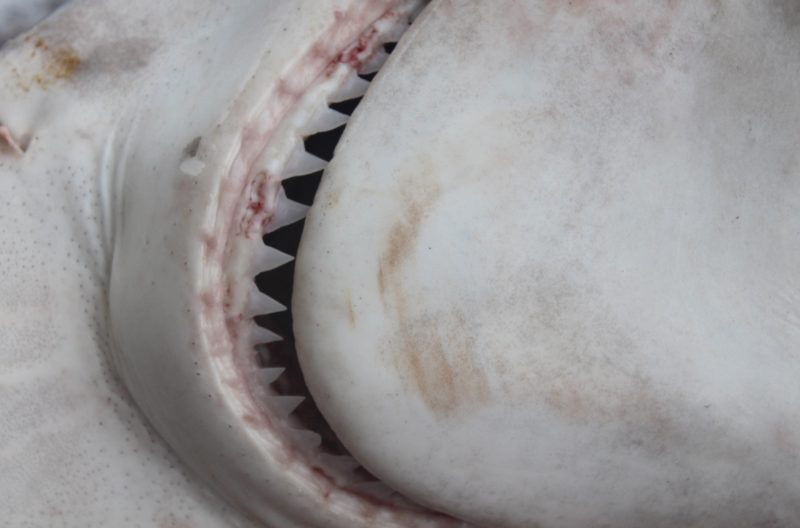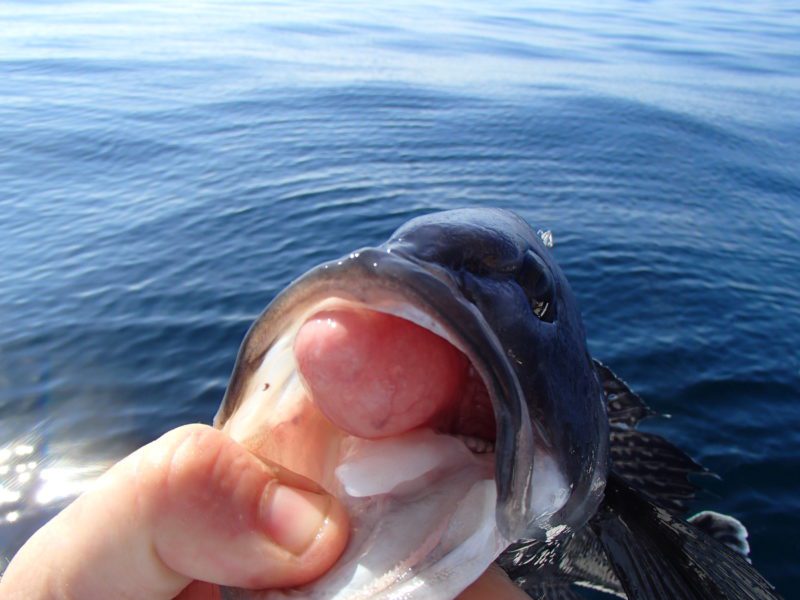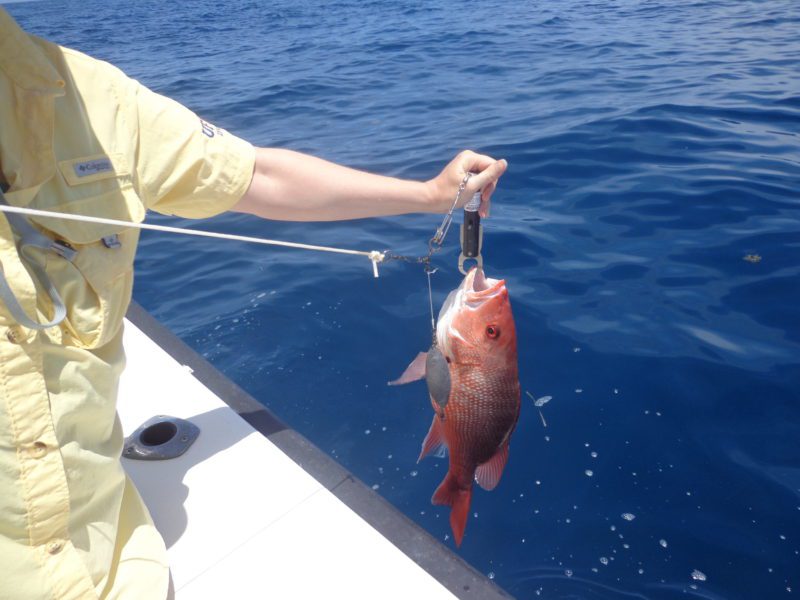One of the terms for this phenomenon is barotrauma, and it doesn’t just affect humans – bats, dolphins, sea turtles, and fish are all known to suffer injuries from sudden changes in pressure.
Offshore anglers know that fish pulled from deep waters (approximately 30 feet and deeper) can be highly susceptible to barotrauma – that’s partially because many fish have a swim bladder, an air-filled sac that helps them regulate their buoyancy and swim efficiently. Rapid ascent in the water can causes the swim bladder to inflate or even, in severe cases, to rupture – and when that happens, the gas inside has nowhere to go but the body cavity. As the air molecules continue to expand, they put more and more pressure on the internal organs, in some cases pushing them out of the only available outlets: the mouth and anus.
Barotrauma is a fairly common problem for deep-sea anglers, but there are ways to successfully treat it when you don’t plan to eat a fish you catch (or cannot, because the species is protected, out of season, or the wrong size). There are, however, a number of misconceptions about how and when to treat a fish for barotrauma.
Myths about Barotrauma
Myth #1: If a fish doesn’t look bloated, it doesn’t have barotrauma.
Bloating is the most obvious sign of barotrauma in a fish that’s been reeled in.
But some fish, such as cobia and sharks, don’t have swim bladders – so while they may not exhibit bulging eyes or float on water’s surface after release, these animals could still have injury-causing gasses in their tissues, just like humans.
Myth #2: A fish that swims away is in the clear.
It’s a logical assumption that a deepwater fish that swims off with no apparent bloating or injuries has not suffered from its rapid ascent through the water column – no harm, no foul.
Unfortunately, research has shown that barotrauma can have delayed impacts that anglers don’t always see. A fish may swim away only to succumb to a predator on its return to the reef, for example.
A study looking at barotrauma and survival in red snapper found that 15% of fish pulled from deep waters died immediately. Another 13% of fish swam away, seemingly unharmed – but later died within 72 hours. That means nearly one in three fish in this study ultimately did not survive being caught and released.
Reef fish, especially the largest and oldest females that contribute the most eggs each year, are far too valuable to lose at so high a rate. It’s our duty as catch-and-release anglers to practice release techniques that will give the fish we love a better shot at survival – because even a tiny improvement in survival for deepwater fish can translate to millions of fish saved each year.
Myth #3: Venting is the only option for treating barotrauma.
Venting entails the use of a hollow, metal tool to puncture the side of a fish’s body. When done correctly, venting can effectively allow those built-up gases to escape from the swim bladder, improving a fish’s ability to swim back down to the depths from which it came – and increasing its chances of survival.
There are some problems with venting, though. First, it can be challenging to properly vent a fish – correct venting requires a fair knowledge of the anatomy of the species you’ve caught. A few inches in the wrong direction, and instead of the body cavity, you could stab the intestines, muscle, or worse – an organ such as the heart. You should never vent a fish by puncturing its stomach (when sticking out of its mouth) or intestines (when distended from the anus). This can cause further injury to the fish.
Even a correctly vented fish can still suffer ill effects from the venting procedure itself, such as infections or a ruptured swim bladder. Lastly, venting does nothing to alleviate the build-up of small amounts of gasses in the other tissues of the fish, such as the muscles or eyes.
Even with those problems – venting a fish is still preferable to letting it float away on the surface, and venting has been shown to improve the survival of fish suffering barotrauma. But it’s not the only option: read on for another fix.
There’s A Simple Solution
For each of the dilemmas above, experts are increasingly recommending a single failproof solution: descending devices.
Descending devices quickly return fish to the lower depths from which they were caught, where they can recover from the effects of barotrauma and stand a dramatically higher chance of survival. Anglers can use descending devices on any kind of fish, with any degree of barotrauma, without any knowledge of fish’s anatomy.
This article is from South Carolina Department of Natural Resources (SCDNR)





